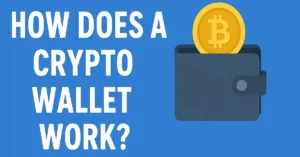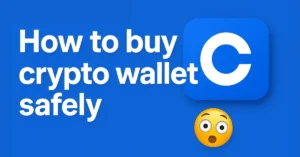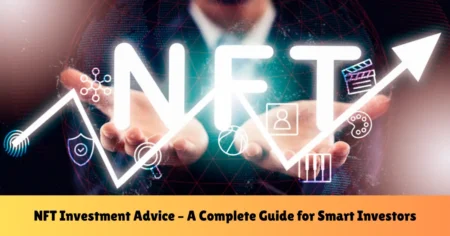DeFi staking opportunities
In recent years, crypto has evolved from a speculative digital asset into a full-blown financial ecosystem. One of the most promising aspects of this new financial world is DeFi staking—a way for everyday users to earn passive income while supporting decentralized networks. With the traditional banking system offering minimal returns on savings, DeFi staking presents a compelling alternative. But how does it work, and what are the risks and rewards? In this guide, we’re going to dive deep into the world of DeFi staking, break down its mechanics, and highlight the best opportunities currently available in the crypto landscape.
Introduction to DeFi and Staking
What is Decentralized Finance (DeFi)?
Decentralized Finance, or DeFi, is a revolutionary shift in how financial services are delivered. Instead of relying on traditional financial institutions like banks and brokerages, DeFi utilizes blockchain technology to offer financial services in a decentralized manner. Think loans, insurance, trading, and savings—without the middleman.
The key foundation of DeFi lies in smart contracts—self-executing programs that run on blockchains like Ethereum. These contracts allow developers to create decentralized applications (dApps) that can perform functions traditionally handled by banks. For instance, borrowing and lending protocols like Aave and Compound let users lend their crypto and earn interest, or borrow against their assets without needing to pass a credit check.
Why does this matter? Because DeFi puts financial control back into the hands of users. You don’t need to trust a third party. You just need to trust the code—and in many cases, that code is open-source and auditable. This transparency and decentralization make DeFi a cornerstone of the new financial revolution.
What Does Staking Mean in Crypto?
Staking is one of the simplest and most popular ways to earn passive income in crypto. It involves locking up your crypto assets to help support the operations of a blockchain network. In return, you earn rewards—typically in the same cryptocurrency you’re staking.
At its core, staking is tied to Proof-of-Stake (PoS) consensus mechanisms, which are alternatives to the energy-intensive Proof-of-Work (PoW) systems used by Bitcoin. With PoS, validators are selected to create new blocks and confirm transactions based on how many coins they have staked. The more you stake, the higher your chances of being chosen—and the higher your potential rewards.
But here’s the good part: You don’t have to be a tech-savvy validator to participate. Many platforms let you delegate your tokens to a validator and still earn a portion of the rewards. This makes staking accessible to almost everyone.
One of the major appeals of staking is its predictability. Unlike trading, where prices can swing wildly, staking provides a more stable and consistent return. That said, it’s not without risk—token prices can still fluctuate, and some platforms have complex lock-up periods or slashing penalties if validators act maliciously.
Why DeFi Staking Matters in Today’s Financial Landscape
The traditional financial system has long failed to provide fair and meaningful yields to average users. With interest rates on savings accounts often hovering near zero, people are seeking alternatives that offer better returns. That’s where DeFi staking shines.
DeFi staking allows individuals to take control of their finances, bypass centralized institutions, and earn returns that are significantly higher than what banks offer. We’re talking annual percentage yields (APYs) ranging from 5% to even 100% in some cases, depending on the project and risk involved.
Moreover, DeFi staking helps secure blockchain networks. When users stake their assets, they’re effectively participating in network governance and stability. This creates a community-driven approach to security and development—a stark contrast to the opaque systems run by central banks and large financial institutions.
Staking also promotes a “skin in the game” mentality. Validators and participants are incentivized to act in the network’s best interests because their staked assets are on the line. This creates a self-regulating system that’s both efficient and transparent.
In short, DeFi staking isn’t just a way to make money—it’s a philosophical and economic statement about the future of finance.
How DeFi Staking Works
The Role of Validators and Delegators
To understand DeFi staking, you need to understand the two primary players: validators and delegators.
Validators are like the guardians of the blockchain. They validate transactions, maintain the network, and add new blocks to the chain. In return for their work, they receive rewards in the form of new tokens or transaction fees. But to become a validator, you often need to stake a significant amount of crypto and maintain high uptime and technical reliability.
Delegators, on the other hand, are regular users who don’t want to run a validator node themselves but still want to earn rewards. They delegate their tokens to a trusted validator and earn a share of that validator’s rewards. This system lowers the barrier to entry and makes staking accessible to almost anyone with a wallet.
The dynamic between validators and delegators is symbiotic. Validators need more staked tokens to gain influence and earn more rewards. Delegators want to earn passive income without managing the technical side of things. It’s a win-win setup—provided you choose a trustworthy validator.
One important note: both validators and delegators are subject to “slashing”—a penalty that deducts a portion of staked assets if malicious or negligent behavior occurs. This helps keep everyone accountable.
Proof-of-Stake (PoS) vs. Traditional Proof-of-Work (PoW)
When it comes to consensus mechanisms, PoS is the leaner, greener cousin of PoW.
Proof-of-Work, made famous by Bitcoin, requires miners to solve complex mathematical problems to add blocks to the blockchain. This process is energy-intensive and has come under scrutiny for its environmental impact.
Proof-of-Stake, on the other hand, doesn’t require mining. Instead, validators are chosen based on the number of coins they’ve staked. The more you stake, the higher your chances of being selected to validate transactions and earn rewards. This model is significantly more energy-efficient.
Staking through PoS also improves scalability. Networks using PoS can process transactions faster and cheaper, making them more suitable for real-world financial applications. It’s no surprise that many next-gen blockchains—including Ethereum 2.0—have adopted or are moving toward PoS models.
From a user perspective, PoS makes it easier to earn returns on your crypto. You don’t need expensive mining rigs. Just stake your tokens on a platform or delegate them, and watch the rewards roll in.
Smart Contracts in DeFi Staking
Smart contracts are the digital backbone of DeFi staking. These self-executing code snippets run on the blockchain and carry out functions automatically based on pre-defined conditions.
For example, a smart contract might be programmed to distribute staking rewards every week or automatically re-stake your earnings to maximize compounding. No human intervention required. This reduces the chance of fraud or error and ensures transparency.
Smart contracts also make DeFi staking trustless. You don’t have to rely on a bank, an exchange, or even a person. The code does all the work—and since it’s often open-source, anyone can verify it.
However, smart contracts aren’t foolproof. Bugs in the code can lead to exploits, as we’ve seen in various DeFi hacks over the years. That’s why it’s crucial to use well-audited platforms and understand the smart contract risks before staking your assets.
Popular DeFi Platforms for Staking
Ethereum 2.0
Ethereum 2.0, also known as “The Merge,” marks Ethereum’s transition from a Proof-of-Work (PoW) to a Proof-of-Stake (PoS) consensus mechanism. This upgrade isn’t just a technical improvement—it’s a complete transformation of the network’s security and scalability.
By staking ETH, users help secure the network while earning rewards. To become a validator on Ethereum 2.0, you need to stake at least 32 ETH. However, not everyone has that amount lying around. That’s where staking pools and centralized platforms come into play. Platforms like Lido, Rocket Pool, and even Coinbase allow users to stake smaller amounts of ETH while still enjoying the benefits of staking rewards.
One of the unique features of Ethereum staking is the liquidity tokens that come with platforms like Lido. For instance, when you stake with Lido, you receive stETH—a token that represents your staked ETH. This token can then be used in DeFi protocols, adding a layer of flexibility and liquidity to traditional staking.
Staking on Ethereum can yield annual returns between 4% and 6%, depending on network activity and total staked ETH. As Ethereum continues to evolve, especially with sharding and scalability updates on the horizon, ETH staking is positioned as one of the most attractive DeFi opportunities available today.
Polkadot and the Nominated Proof-of-Stake Model
Polkadot is another major player in the staking world. Its unique consensus mechanism, called Nominated Proof-of-Stake (NPoS), introduces an added layer of community involvement. Instead of just validators and delegators, Polkadot uses nominators who support validator candidates by staking DOT tokens.
This model not only secures the network but also decentralizes power among participants. To maintain a high level of decentralization, Polkadot encourages users to nominate a wide range of validators, making it more resilient to attacks or collusion.
Staking on Polkadot can be done through the official Polkadot-JS UI or through custodial services like Kraken and Binance. Yields typically range between 10% and 14% annually, but returns can vary depending on the validator’s performance and the amount staked.
One of the most exciting aspects of Polkadot staking is its governance structure. Stakers often have voting power on network proposals and upgrades, giving them a real say in the future of the platform. For users interested in both passive income and active participation, Polkadot offers a compelling blend.
Cardano and Its Reward System
Cardano has taken a research-driven approach to blockchain development, and its staking model reflects that careful planning. Based on a protocol called Ouroboros, Cardano’s PoS system enables users to stake ADA and earn regular rewards with minimal risk.
Unlike Ethereum, there’s no minimum amount required to stake ADA. Users can stake directly from popular wallets like Daedalus and Yoroi, or they can join staking pools, which are community-driven groups that combine ADA holdings to increase the chances of earning rewards.
Cardano’s rewards are paid out approximately every five days, known as an “epoch,” which means users can enjoy consistent, short-term returns. Average annual returns typically hover around 4% to 6%, and some staking pools even reinvest earnings automatically, compounding returns over time.
The platform also places a strong emphasis on sustainability and decentralization. There are thousands of staking pools to choose from, reducing the risk of power centralization. Cardano’s system is also designed to balance rewards between small and large pools, making it fairer for everyone.
If you’re looking for a low-risk, user-friendly entry into DeFi staking, Cardano is a solid option with a proven track record and robust community support.
Cosmos and ATOM Staking
Cosmos is often called the “Internet of Blockchains” because of its focus on interoperability. But beyond that catchy tagline, Cosmos offers one of the most lucrative staking ecosystems through its native token, ATOM.
Staking ATOM helps secure the Cosmos Hub and supports its expanding network of interconnected blockchains. Validators on Cosmos are chosen based on how much ATOM they’ve staked or have been delegated. Like with other platforms, regular users can delegate their tokens and still earn rewards.
Annual yields for staking ATOM are typically in the 10% to 20% range, making it one of the higher-earning PoS networks. Rewards are paid out in ATOM and can be compounded if you choose to re-stake your earnings.
What sets Cosmos apart is its active development and innovation. New chains that join the Cosmos ecosystem often offer airdrops to ATOM stakers, giving participants even more opportunities to earn. That means you’re not just earning staking rewards—you might also receive free tokens from upcoming projects.
Security is also a major focus for Cosmos. Validators are regularly audited, and the system includes slashing penalties to discourage bad behavior. As Cosmos continues to grow, ATOM staking remains a powerful tool for passive income and network participation.
Types of DeFi Staking Opportunities
Single Token Staking
Single token staking is perhaps the simplest form of DeFi staking. In this model, you stake just one type of cryptocurrency—usually the native token of a specific blockchain or platform—and earn rewards in that same token.
For example, staking ETH on Ethereum 2.0 or ADA on Cardano involves single-token staking. You lock up your tokens in a network validator or staking pool, and over time, you accumulate rewards. It’s straightforward, relatively low-risk, and ideal for beginners.
The primary advantage of single-token staking is its predictability. There’s no need to worry about impermanent loss (which can affect LP staking), and you’re not exposed to multiple market variables. Your returns are based on the staking rate and the token’s market value.
However, there are trade-offs. While the APYs tend to be more stable, they’re often lower than other DeFi opportunities like liquidity mining or yield farming. And because your tokens are locked up (sometimes for a set period), you might miss out on price surges if you can’t withdraw them quickly.
Still, for long-term holders who believe in the token’s future, single-token staking offers a smart way to grow their assets passively.
Liquidity Pool (LP) Staking
Liquidity Pool (LP) staking is a more advanced form of DeFi staking, but it’s also where some of the highest yields live. In this model, users provide liquidity to decentralized exchanges (DEXs) like Uniswap, PancakeSwap, or SushiSwap by depositing two tokens into a trading pair (ETH/USDC). In return, they receive LP tokens, which represent their share of the pool.
Now here’s the twist—those LP tokens can then be staked on DeFi platforms to earn additional rewards. This process, often called “liquidity mining,” incentivizes users to support decentralized trading by offering high APYs, sometimes over 100%.
The dual-earning mechanism is what makes LP staking so attractive. First, you earn a share of the trading fees from the DEX. Second, you earn staking rewards from the platform that incentivizes LP token staking.
However, LP staking isn’t without its complexities. One of the biggest risks is impermanent loss, which happens when the price of the assets in the liquidity pool diverge significantly. You could end up with less of one token (or both) when you withdraw than if you had just held them separately. Additionally, the yield might look amazing on paper, but if the platform isn’t secure or the token is highly volatile, you could end up with losses instead of gains.
For experienced users who understand the dynamics of DeFi protocols and want to maximize returns, LP staking offers enormous potential—but it should be approached with caution and strategy.
Yield Farming vs. Staking
At first glance, yield farming and staking might seem like the same thing. Both involve locking up assets to earn rewards, right? Well, not quite.
Staking usually refers to locking your tokens in a network validator or smart contract to help secure a blockchain and earn passive income in the same token. It’s generally safer and simpler, especially when done on major blockchains like Ethereum, Cardano, or Polkadot.
Yield farming, on the other hand, is more like a game of financial strategy. It involves moving assets across multiple DeFi protocols to chase the highest yields. You might stake LP tokens on one platform, use the earned rewards to farm another token on a different platform, and continue to stack and compound those returns.
Yield farming can produce higher rewards than basic staking, but it comes with more risk. You need to understand how different protocols work, keep track of changing APYs, and manage exposure to multiple tokens that can fluctuate in value. There’s also a higher chance of encountering scams or smart contract vulnerabilities in the wild west of yield farming.
So which is better? That depends on your risk tolerance and time commitment. Staking is passive and secure. Yield farming is active and lucrative—but risky. Many savvy DeFi users combine both to diversify and maximize their earnings.
Benefits of DeFi Staking
Earning Passive Income
One of the biggest draws of DeFi staking is the ability to earn passive income. You don’t need to trade, time the market, or take on unnecessary stress. Simply lock up your crypto, and let it work for you.
This is a game-changer in personal finance. Think of it like earning interest on your savings account—but instead of the 0.01% your bank gives you, you might be earning 5%, 10%, or even more annually. It’s an opportunity to generate real returns while maintaining control of your assets.
And it’s not just for whales or crypto veterans. Thanks to staking pools and user-friendly interfaces, anyone with a smartphone and a wallet can start earning. Whether you’re staking $50 or $50,000, you’re participating in the same ecosystem and benefiting from the same rewards model.
The passive nature of staking also means you can set it and forget it. Many platforms even allow for auto-compounding, where your earned rewards are automatically restaked to increase your future earnings. Over time, this compounds your returns and accelerates your portfolio growth.
Of course, passive income doesn’t mean zero risk. You still need to be smart about where and what you stake. But with some research and basic precautions, DeFi staking can be one of the most accessible and reliable ways to grow your wealth in the digital age.
Supporting Blockchain Networks
Staking isn’t just about earning—it’s about participating. When you stake your tokens, you’re helping to secure the network and maintain its operations. This makes you an integral part of the ecosystem, even if you’re not a developer or tech expert.
In Proof-of-Stake systems, stakers validate transactions and add new blocks to the chain. By staking, you ensure the network runs smoothly and stays decentralized. Without enough stakers and validators, these networks wouldn’t function effectively or securely.
This is where the philosophy of decentralization shines. Instead of relying on massive data centers or mining farms, PoS networks rely on communities of users. The more people who stake, the more secure and resilient the blockchain becomes.
Some networks, like Polkadot and Cosmos, even give stakers voting rights. That means you can influence protocol upgrades, governance decisions, and funding proposals. In this way, staking transforms users from passive holders into active participants shaping the future of the technology.
So while the financial rewards are a great incentive, there’s also a deeper purpose behind staking. It’s about supporting innovation, protecting decentralization, and investing in the long-term success of blockchain technology.
Compounding Rewards and APY Growth
If you really want to supercharge your staking rewards, look no further than compounding. When you regularly restake your rewards, you’re not just earning on your initial deposit—you’re earning on your earnings. Over time, this can significantly increase your total return.
Let’s break it down. Suppose you stake $1,000 in a DeFi platform with an annual percentage yield (APY) of 10%. If you don’t touch it for a year, you’ll earn $100. But if you reinvest your rewards monthly, your balance grows faster, and you’ll earn more than $100 due to the compounding effect.
Some platforms, like Lido or Curve, offer auto-compounding, where the system automatically restakes your rewards. Others require manual reinvestment. Either way, compounding is one of the most effective strategies for long-term wealth building in DeFi.
The key to maximizing compounding returns is consistency. The longer you leave your assets staked (and reinvested), the more exponential your growth becomes. Of course, you need to balance this with your liquidity needs and risk tolerance, but for long-term holders, compounding can be a game-changer.
Also, pay attention to APY vs. APR. APR is the flat rate without compounding, while APY includes the effects of compounding. When comparing platforms, always check which metric they’re using so you can make informed decisions.
Risks Involved in DeFi Staking
Smart Contract Vulnerabilities
Despite the many benefits of DeFi staking, one of the biggest risks you should never ignore is the vulnerability of smart contracts. These self-executing programs are responsible for managing your staked assets and distributing rewards. But if there’s a bug in the code or a flaw in the contract’s logic, it can be exploited—often with devastating consequences.
We’ve seen this happen repeatedly. Some DeFi platforms, despite offering promising APYs, have suffered major losses due to hacked or unaudited contracts. Hackers often target these systems because once they find a loophole, it can lead to massive drains of funds in minutes.
To minimize this risk, it’s critical to stake only on platforms that have undergone thorough security audits from reputable third-party firms. Check for transparency in documentation, community reputation, and whether the code is open-source. The more eyes on the contract, the lower the chance of something slipping through.
Also, newer protocols offering ridiculously high returns (think 1,000%+ APYs) are often the riskiest. While it’s tempting to chase those gains, remember: in DeFi, if it sounds too good to be true, it probably is.
Market Volatility
Another major risk associated with DeFi staking is market volatility. While staking itself may yield stable returns, the value of the token you’re staking is far from stable. Crypto markets are notorious for massive price swings—sometimes as much as 20% in a single day.
Let’s say you stake a token at $100 and earn a 10% reward over the year. But if that token drops to $60, your effective return in fiat terms is a loss—even with the added tokens. This is why it’s important to choose staking assets not just for their yield but also for their long-term potential and price stability.
Some users mitigate this risk by staking stablecoins (like USDC or DAI) on protocols that support them. These generally offer lower APYs but are far less volatile, making them ideal for risk-averse investors.
Diversifying your staking assets can also help balance this risk. Don’t put all your capital into one high-risk token. Spread it out across multiple networks with varying levels of volatility and yield.
Lock-Up Periods and Liquidity Constraints
One factor that many first-time stakers overlook is lock-up periods. Some platforms require you to lock your tokens for a specific duration, which means you can’t withdraw them until that time has passed. In rapidly changing markets, this can be a disadvantage.
Imagine the market starts crashing, and your staked tokens are locked for 30 or 90 days. You’re forced to watch as the value drops, unable to react. This illiquidity can lead to significant opportunity costs, especially during market corrections or black swan events.
Other platforms might allow unstaking at any time, but impose a withdrawal delay—sometimes several days. This is common with Ethereum 2.0, where validators need to go through a withdrawal queue.
Before staking, always understand the terms of withdrawal, especially if you’re dealing with a volatile asset. If flexibility is a priority for you, opt for liquid staking solutions that provide a derivative token (like stETH for Ethereum), which can be used or traded while your original tokens remain staked.
How to Choose the Right DeFi Staking Platform
Reputation and Community Feedback
Choosing the right platform can make or break your staking experience. One of the most reliable indicators of a platform’s trustworthiness is its reputation. Does it have a strong developer team? Is it backed by known investors or partnered with credible institutions? Has it been audited?
Also, take time to check community forums, Reddit threads, and Twitter discussions. The DeFi community is very vocal, and if a platform has had issues or shady practices, someone has likely posted about it. This kind of crowd-sourced due diligence is invaluable in the decentralized world.
Don’t ignore user experience either. A platform that’s confusing, buggy, or lacks transparency in rewards is a red flag. The best DeFi staking platforms are intuitive, well-documented, and actively maintained.
Fees and Reward Structures
Every staking platform has its own fee structure. Some take a percentage of your rewards as a validator commission, others have network fees that can add up quickly—especially on blockchains like Ethereum, where gas fees can spike dramatically.
Read the fine print. Know how much you’ll actually take home after all fees are deducted. Platforms like Lido or Rocket Pool have transparent, predictable fee models, while others may bury them in complex smart contract structures.
Also, pay attention to how rewards are distributed. Are they paid out in the same token you stake, or a different one? Can you claim them anytime, or do you have to wait? Does the platform support auto-compounding? All these factors influence your actual ROI.
Use tools like Staking Rewards or DeFiLlama to compare platforms, understand their payout schedules, and forecast your earnings before committing.
Future Trends in DeFi Staking
Liquid Staking Innovations
As the DeFi space matures, liquid staking is emerging as a game-changer. This model allows users to stake their assets while still maintaining liquidity. When you stake through liquid platforms like Lido, you receive a liquid token in return (stETH), which you can use elsewhere in DeFi.
This approach solves one of staking’s biggest pain points—capital inefficiency. Instead of locking up your assets and missing out on other opportunities, you can earn staking rewards and still participate in trading, lending, or yield farming.
Expect this trend to grow rapidly as new projects build on the concept of composable DeFi. Platforms that offer liquid staking and integrate with other dApps will likely lead the next wave of staking innovation.
Cross-Chain Staking Opportunities
Cross-chain staking is another exciting development. Most current staking happens on individual blockchains, but the future points toward interoperable staking—where users can stake assets on one chain to earn rewards from another.
Projects like Cosmos and Polkadot are already pushing this vision forward with their interconnected ecosystems. This opens the door for more complex, but potentially more lucrative, staking setups that span multiple chains and protocols.
As bridges and interoperability layers improve, expect staking to become more flexible and dynamic, enabling users to chase the best yields across ecosystems with minimal friction.
Conclusion
DeFi staking represents one of the most exciting and accessible opportunities in the crypto world today. Whether you’re a casual investor looking to earn passive income, or a crypto native seeking to support decentralized networks, staking offers a meaningful and rewarding way to engage with the blockchain ecosystem.
The key is to educate yourself. Understand the platforms, the risks, and the strategies that best align with your goals. Start small, diversify, and don’t chase yield without doing your homework. DeFi isn’t a get-rich-quick scheme—it’s a powerful tool for financial empowerment when used wisely.
As the space evolves, innovations like liquid staking and cross-chain compatibility will continue to shape the future. And by participating now, you’re not just earning—you’re helping to build the decentralized financial system of tomorrow.
FAQs
What is the safest DeFi staking platform?
Platforms like Lido, Rocket Pool, and Coinbase are considered among the safest due to strong security audits, established reputations, and transparent operations. Always look for platforms with third-party audits and active communities.
Can I lose money in DeFi staking?
Yes. While you can earn rewards, the value of your staked tokens can decrease due to market volatility. Smart contract bugs, validator penalties, or lock-up periods can also contribute to losses.
How do I start staking as a beginner?
Choose a reliable wallet like MetaMask or Trust Wallet, buy a staking-eligible token, and use a trusted platform (like Lido for ETH or Daedalus for ADA). Start small and read all terms before staking.
What’s the difference between staking and yield farming?
Staking is usually passive and involves locking one token to earn rewards. Yield farming is more active, involves multiple tokens and platforms, and often yields higher—but riskier—returns.
How often do I receive staking rewards?
It varies. Some platforms distribute rewards daily, others weekly or by epoch (every 5 days for Cardano). Check your platform’s payout schedule for specifics.
Also, read
- What is a Crypto Wallet and How Does It Work? – Coinsify
- 10 Crypto Terms Every Beginner Must Know – Coinsify
- What is Blockchain Technology – Complete Guide – Coinsify
- How to Buy Crypto Safely in 2025 – Complete Guide – Coinsify
- Bitcoin vs Ethereum: Key Differences Explained – Complete Guide
- Ultimate Blockchain Glossary: Learn Blockchain Terms Easily
- How to Buy Bitcoin Safely (Complete Beginner’s Guide)
- Top 10 Crypto Wallets for Beginners (2025 Edition)
- What is Cryptocurrency? A Beginner-Friendly Guide (2025)






